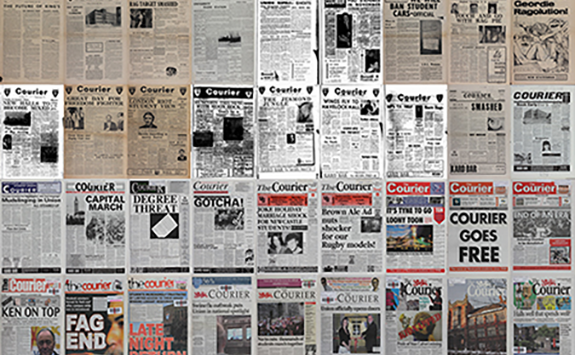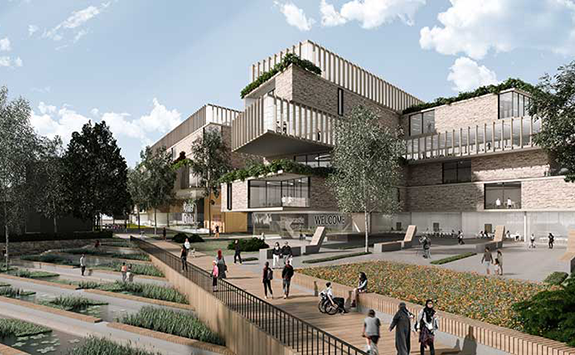Newcastle through the decades
Our alumni community have witnessed monumental changes to the University and city of Newcastle upon Tyne over the past six decades. Read on to travel through the decades and reminisce on your time at Newcastle (or discover what’s happened since you left!)
11 July 2022
From us gaining independence from Durham University and welcoming the first cohort of Newcastle University students in 1963, to opening new campuses in Malaysia and Singapore. From Paul McCartney’s Wings performing in student accommodation to Bruce Springsteen selling out St. James’ Park. From Martin Luther King Jr’s honorary degree in 1967 to the opening of Luther’s Bar on campus in 2017.
Read on to travel through the decades and reminisce on your time at Newcastle (or discover what’s happened since you left!) Alternatively you can skip to a particular decade below:
Newcastle in the 1960s
Our timeline begins on 10 July 1963 with ‘The Universities of Durham and Newcastle upon Tyne Act’. This Act dissolved Durham University’s King’s College, creating in its place the University of Newcastle upon Tyne (or Newcastle University as we now call ourselves!) The first cohort of Newcastle University students joined us that September.
Big changes were also afoot in the city centre in 1963, with John Dobson’s iconic Royal Arcade being demolished to make way for the Central Motorway and Swan House, now the gateway to the city from the Tyne Bridge.
In the centre of town, preparations were also being made for a new shopping complex, demolishing more of John Dobson’s architecture. Two of the three terraces on Old Eldon Square were removed to make way for Eldon Square shopping centre, with construction beginning in 1969 and being completed in the mid-70s.
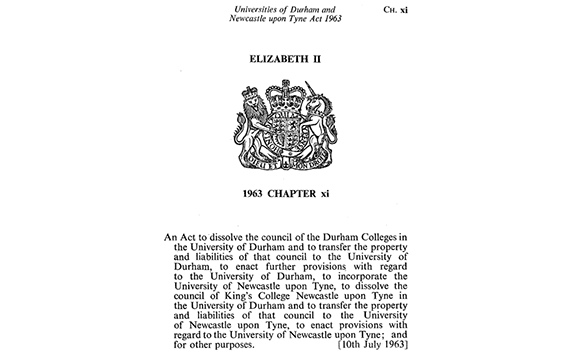
After gaining our independence from Durham, we set about growing the Newcastle campus. Merz Court was officially opened by then Prime Minister Harold Wilson on 7 May 1965. Ever since, the building has been home to Chemical Engineering and Electrical Engineering. Mathematics & Statistics was also based in Merz Court from opening until their 2007 move to the Herschel Building. And in 1968, the Claremont Complex officially opened, incorporating Claremont Tower (home to the infamous paternoster lift until 1989!), Claremont Bridge, the Daysh Building and an extension to the Fine Art Building.
Wilson wasn’t the only notable visit to campus. In 1967, Newcastle University became the only UK University to present Dr Martin Luther King Jr with an honorary degree in his lifetime. Dr King attended a special congregation in his honour on 13 November 1967 and was presented with an Honorary Doctorate in Civil Law from the University’s Chancellor and Vice-Chancellor. Barely five months later, the University found itself organising a memorial service following Dr King's assassination in Memphis, Tennessee, on 4 April 1968.
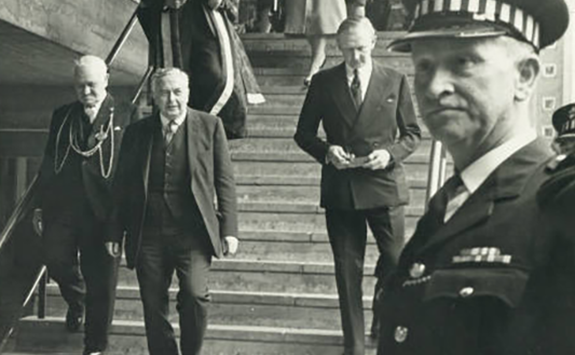
In the latter part of the 60s, Newcastle hosted the debut concert from Led Zeppelin (who had previously used the moniker the New Yardsticks) at the Mayfair, with ‘Dazed and Confused’ and ‘Communication Breakdown’ featuring on the setlist.
On campus, students enjoyed weekly Union Raves in the SU, with performances from the likes of The Fourmost, the Graham Bond Quartet and Danny Storm.
The decade ended on a high for locals and adopted Newcastle United fans amongst our student community, as the club won the Inter-Cities Fairs Cup (now the Europa League) in 1969, defeating Hungarian side Újpesti Dózsa 6-2 on aggregate in a two-leg final.
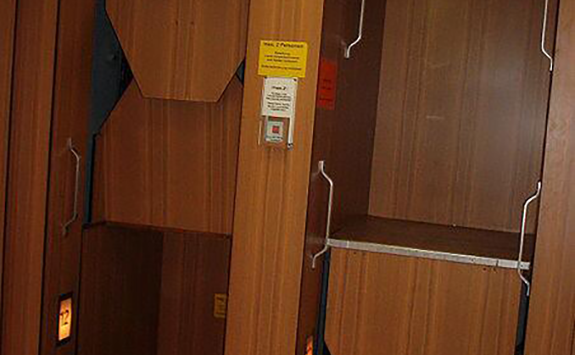
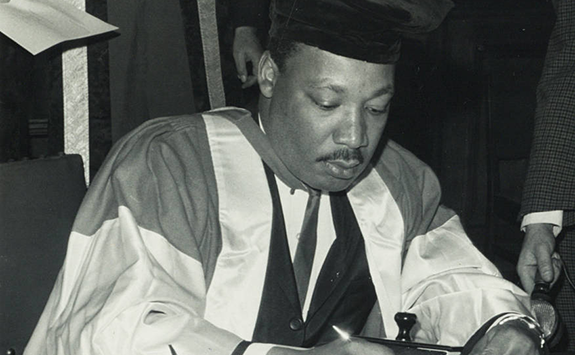
Throughout the 1970s, staples of the modern-day North East landscape and culture were introduced.
At the very start of the decade, The North of England Open Air Museum was established at Beamish. The attraction, now known as Beamish, the Living Museum of the North, brings to life the social and economic history of the region and has since welcomed exhibits covering life from the 1820s to 1950s.
A year later, Fenwick department store debuted its now much-loved annual Christmas window display on Northumberland Street. Marked as the start of the festive calendar in Newcastle, over the years we’ve seen windows depicting aliens, Alice in Wonderland, Pinocchio and Shaun the Sheep – to name just a few! The very first display in 1971 was based on popular children’s TV series Camberwick Green.
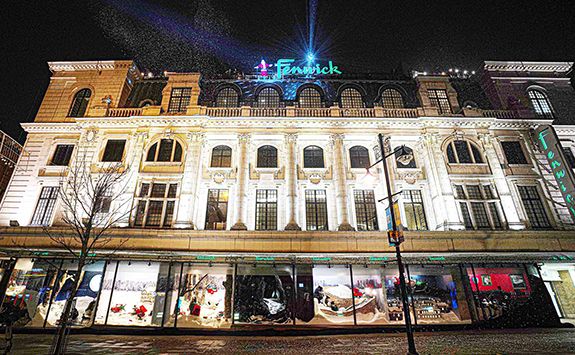
In 1974 building of the Tyne and Wear Metro system commenced, with the first section of railway - connecting Haymarket to Tynemouth – opening in 1980. Work on the new Eldon Square shopping centre finished in 1976 and it opened to the public, with Her Majesty Queen Elizabeth II officially opening the complex a year later.
That same year, 1977, US President Jimmy Carter visited Washington Old Hall near Sunderland before accompanying then-Prime Minister Jim Callaghan to Newcastle. Carter delighted an assembled crowd of some 20,000 outside Newcastle Civic Centre with the words “Howay the Lads”!
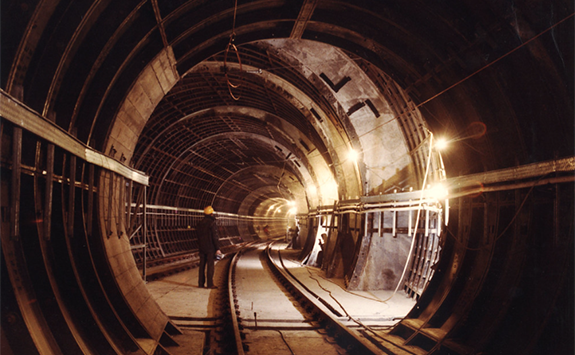
As well as actual royalty, the city welcomed pop and film royalty across the 1970s (and a US President to boot!) Gritty movie ‘Get Carter’, starring Michael Caine, showcased a number of regional locations, including the Durham coat, Blyth and Gateshead, and was released in 1971. In 1972, Newcastle University Students’ Union welcomed Peter Green’s Fleetwood Mac to perform. And five years later, many students were lucky enough to catch Iggy Pop and David Bowie perform together at Newcastle City Hall. Bowie guest-starred on keyboard!
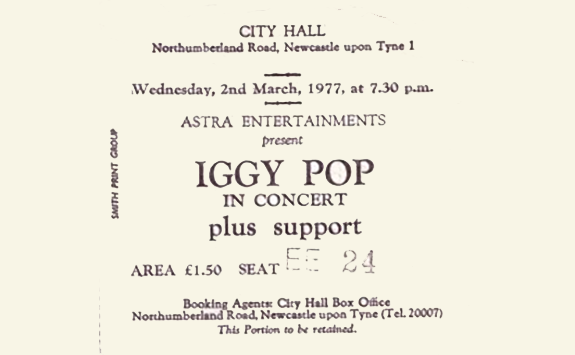
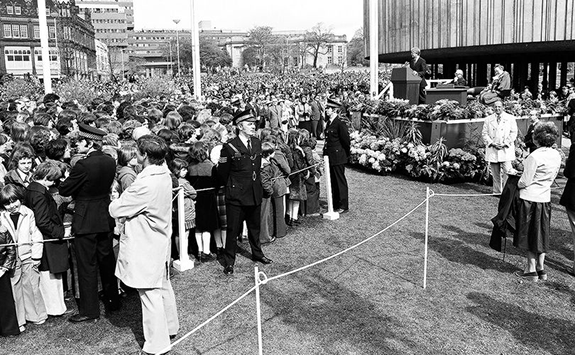
Newcastle in the 1980s
We hit the ground running (literally!) in the 1980s as we hosted the first annual Blaydon Race and Great North Run in the same year – 1981. Welcoming 12,000 runners to its first event, the Great North Run today welcomes 57,000 determined racers, making it the biggest and best half marathon in the world.
Talk about being born to run, music legend Bruce Springsteen descended onto Tyneside that same year, performing at Newcastle City Hall. Just four years later, Springsteen would return to the Toon to play St. James’ Park!
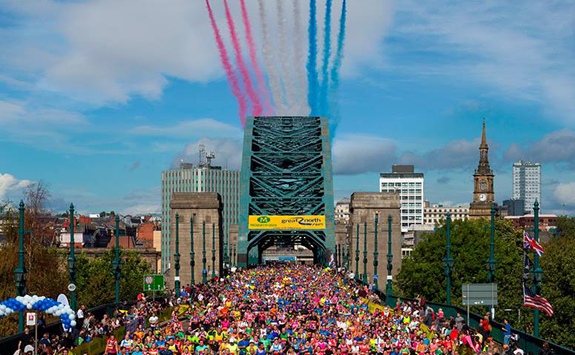
In 1982, the Philip Robinson Library opened on campus. The library – affectionately known as ‘The Robbo’ by students today – is named after a local bookseller and University benefactor and was designed by Newcastle graduate and architect Harry Faulkner-Brown, a pioneering designer of modern library buildings in the UK.
We also welcomed the University’s first cancer research unit in 1982, at a time when mortality from the disease was at a peak in the UK. Since then, cancer survival rates have doubled – in part because of the efforts of people at Newcastle. In 40 years, our Centre for Cancer has grown from 7 principal investigators grown to a team of over 600 researchers, working collaboratively with Cancer Research UK, the Children's Cancer North, the Sir Bobby Robson Foundation and The Newcastle Hospitals NHS Foundation Trust.

In 1984, the Queen Mother arrived on campus to open the University’s new Medical School. This wasn’t the only royal visit of the decade: at the start of the 80s, Queen Elizabeth II officially opened the Queen Elizabeth II bridge, transporting the new Tyne and Wear Metro system across the river Tyne; and in 1983 Princess Diana opened the Redheugh Bridge over the river too.
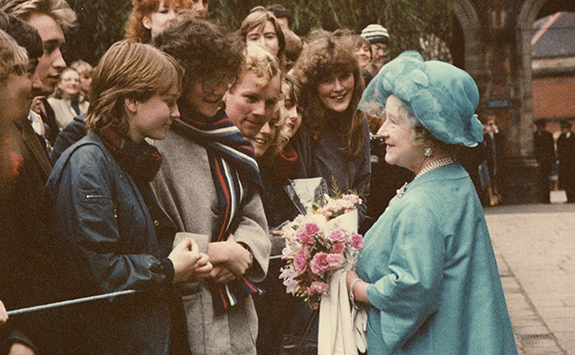
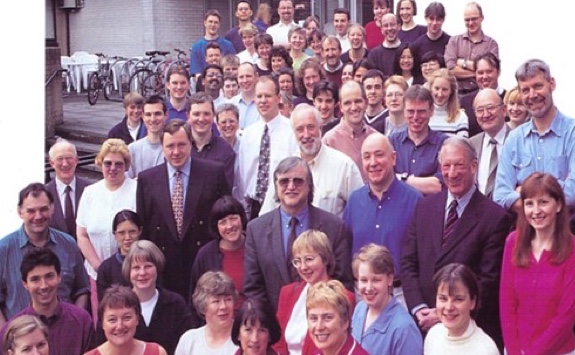
Newcastle in the 1990s
The 1990s marked the start of Newcastle University’s commitment to ageing research. In 1994, the Institute for the Health of the Elderly was established and led by founding director, Professor Jim Edwardson. We are now a global leader in ageing research working across the full spectrum of age-related challenges.
As one music venue opened – with the launch of Newcastle Arena to the west of the city centre in 1995 – Newcastle said goodbye to another with the demolition of the Mayfair Ballroom in 1999. The venue had been located on Newgate Street since 1961 and had hosted big names like Led Zeppelin, The Prodigy, Queen, Nirvana and Kylie Minogue. The closing night of the Mayfair in August 1999 was attended by 5,000 people, with it sadly being demolished a few months later to make way for The Gate.
Thousands descended onto the Quayside in 1993 to welcome the first leg of the Cutty Sark Tall Ships race. Across the river, Gateshead became home to Antony Gormley’s Angel of the North in February 1998 ahead of the millennium celebrations. The 300-tonne sculpture was built by Hartlepool Steel Fabrications and is now one of the best-known landmarks in the country, marking the entrance to the region for thousands of students travelling to Tyneside each year.
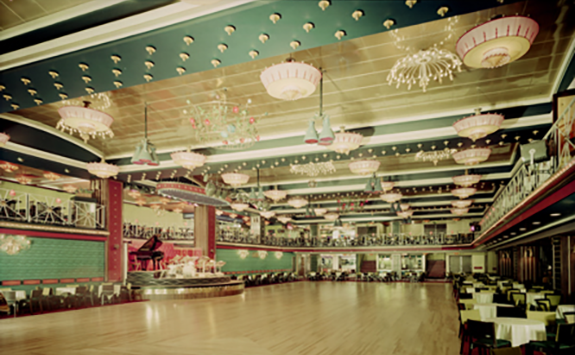
Newcastle’s first foray into student radio began in 1993, when Brendan Flint, Greg Eden and Greg Stone set up Fresh FM. The station promised something “completely different from Radio 1 and Metro FM” and mainly focussed on dance music, although also covered other genres and included news and weather reports. Following an initial four-week broadcasting licence paid for by the SU, the station went on air in October 1993 as ICE-FM. Since 1997, the station has been known as Newcastle Student Radio and in 2012 won an award for outstanding contribution to student radio at the I Love Student Radio awards.
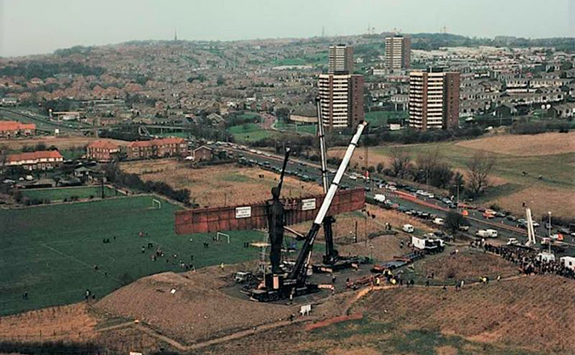
The rivalry between Newcastle and Northumbria Universities was stoked once more with the introduction of the Stan Calvert Memorial Cup in 1994. Running until 2018, this annual varsity contest was named after the University’s first ever Director of Sport. Over the course of the 25 years it was held, Newcastle University won 13 times, Northumbria 10 times and twice the competition ended in a draw.
Things were looking up at the end of the decade for Newcastle United fans amongst our student community, as Bobby Robson took the helm at the club in 1999. His first match as manager saw Newcastle beat Sheffield Wednesday 8-0.
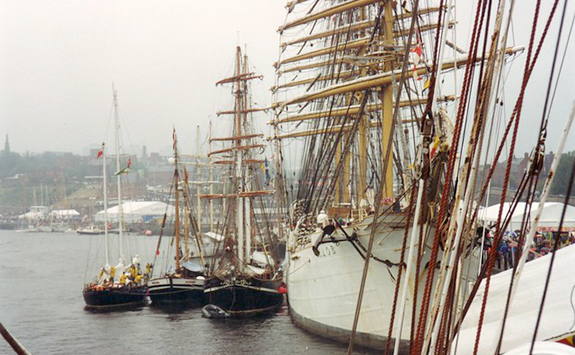
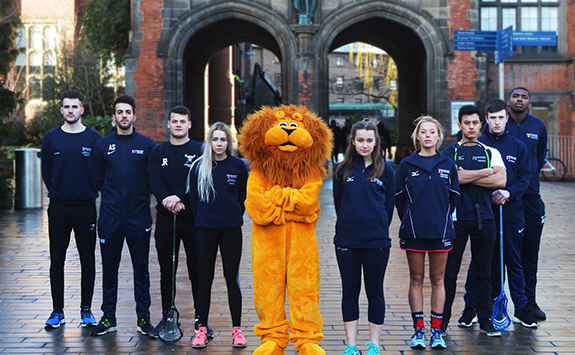
Newcastle in the 2000s
The new millennium saw further investment in the region and its landscape. In the first 4 years of the 2000s the city welcomed the International Centre for Life, Gateshead Millennium Bridge (both opened by Queen Elizabeth II), Baltic Centre for Contemporary Art, The Gate leisure complex and Sage Gateshead.
On the other side of town, it was the end of an era for brewing as the Scottish and Newcastle Brewery’s site closed after occupying the site in the Gallowgate area since 1890. Then Chancellor (and soon to be Prime Minister) Gordon Brown announced that the vacated site would become Science Central, a new hub for science research and innovation in the North. Now known as Newcastle Helix and occupying many university buildings, the site officially opened in 2018.
Campus saw its fair share of changes in the early part of the 21st century too. In 2005, in partnership with the Newcastle upon Tyne Hospitals NHS Foundation Trust, we created the Campus for Ageing and Vitality, with new biomedical laboratories and integrated clinical research facilities. A year later, Northern Stage (formerly Newcastle Playhouse) reopened after a £9.5million refurbishment. And in 2009, the former Hancock Museum across the road from campus was reopened by Queen Elizabeth II as the Great North Museum.
The Great North Museum benefitted from some of the exhibits from our Museum of Antiquities, which closed on campus in 2008. Three years later, the 1940s building which housed the Museum of Antiquities and adjoined the Arches was demolished to create the Student Forum and better pedestrian access to the Quadrangle.

We even introduced a brand-new campus to the University! In 2007, Newcastle University opened a campus dedicated to science and engineering in Singapore. Since then, over 1,000 students have graduated from Newcastle in Singapore.
Newcastle University Students’ Union hosted some big names in its music venue in the early noughties. Students at the time were lucky enough to catch Coldplay performing as a support act for Muse in 2000 before they had their big break. And in 2006, Lily Allen graced our stage.
In the city centre, the former Majestic Ballroom reopened as Newcastle Carling Academy in 2005 (later the O2 Academy) and welcomed Sunderland-based band Futureheads for the opening night show.

In 2004, the University sold Close House to alumnus and local businessman Graham Wylie, co-founder of Sage. The property had been part of the University since 1960 and following a £1million refurbishment in the 1990s was used as a conference centre, with classrooms and offices, a botanical and agricultural laboratory site, together with an astronomical observatory.
Newcastle University’s student media team added another string to its bow in the noughties, launching The Courier TV on 3 March 2007. The channel behind Bigg Market Banter – filming the antics of student partygoers in the city centre – is still going today. Now known as NUTV, the society films big events on campus including sports fixtures, RAG Week, award shows and the SU elections.
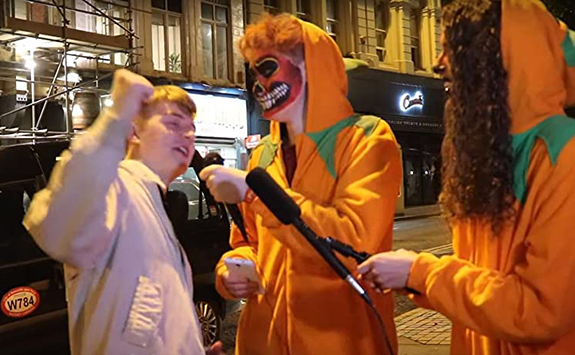
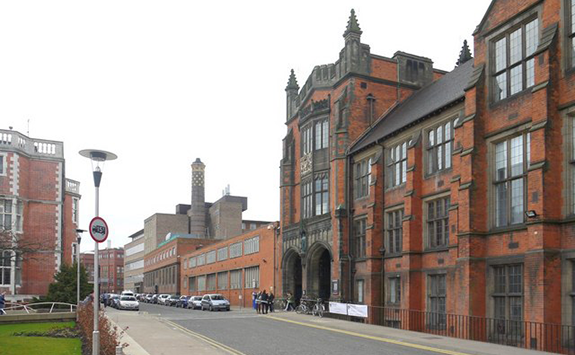
Newcastle in the 2010s
Expanding our global reach, the University opened a second international campus in 2011 in Johor, Malaysia, specialising in medicine. And in 2012, the INTO Newcastle Centre was opened on Percy Street as a hub for our international student community. Construction of the INTO building had to be paused in the late noughties after medieval ruins were discovered in the trenches.
The Class of 2012 will recall the disruption caused across the region by ‘The Toon Monsoon’. On 28 June 2012, or ‘Thunder Thursday’, around 50 mm – a month’s worth of rain – fell in about two hours causing traffic chaos and millions of pounds worth of damage. Since then, Newcastle academics from the School of Engineering and at the Urban Observatory have created a virtual model – or ‘digital twin’ - of the city to predict natural disasters so responses can be better coordinated and timelier.
In 2013, Newcastle academic Professor Sugata Mitra won the first ever $1 million TED prize for his ‘Hole in the Wall’ learning experiment, which was the basis for the 2009 Oscar-winning film Slumdog Millionaire. In the initial experiment, a computer was placed in a kiosk in a wall in a slum at Kalkaji, Delhi and children were allowed to use it freely. The experiment aimed at proving that children could be taught by computers very easily without any formal training.
Another Newcastle University campus was opened halfway through the decade, with Newcastle graduate Princess Eugenie officially opening our London campus in 2015. That same year, the iconic student accommodation Richardson ‘Ricky’ Road was earmarked for demolition.

50 years on from his visit to Newcastle, we unveiled a statue of Dr Martin Luther King Jr on campus in 2017. The statue now forms a focal point of the procession route that students at the University take at the end of their graduation ceremony. A year later, another new artwork was unveiled on campus. The artist behind the Angel of the North, Antony Gormley, installed Clasp on King’s Walk to a mixed reception, with the artwork being loaned to the University until 2028.
Also to mark the 50th anniversary of Dr King’s visit, Newcastle University partnered with city partners to create the Freedom City cultural programme, bringing together international artists, musicians, filmmakers, academics and community groups to inspire a new generation of activists.
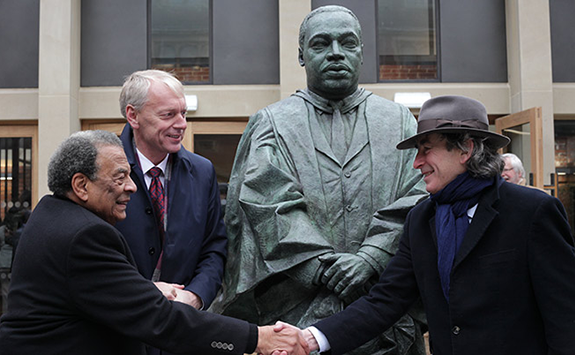
Across the region, we celebrated the unique culture and history of the North East with the Great Exhibition of the North in 2018. Highlights included a drone display on the Quayside, the decoration of Grey’s Monument to resemble a Maypole and a performance by Newcastle alumni Maximo Park on the river Tyne.
The Newcastle Helix site – initially called ‘Science Central’ when announced by Gordon Brown – opened on the former Newcastle and Scottish Breweries site in 2016. The 24 acre site is home to progressive businesses and University departments working together to bring “healthier, longer, smarter and easier lives to the world”. Buildings in development on the site include The Catalyst, home to the National Innovation Centre for Aging and National Innovation Centre for Data; Biosphere, a home to chemistry and biology labs; The Core, a research-led business centre; and The Key, a home to Newcastle University’s structural engineering and research.
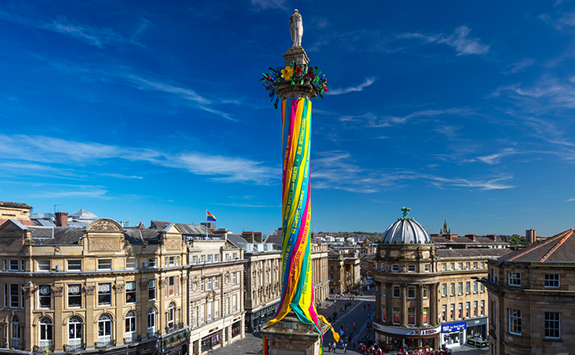

Newcastle in the 2020s
The 2020s got off to an unexpected start as the whole world experienced the COVID-19 pandemic and mandatory lockdowns. While studies and graduations were moved online initially, the University was able to give every graduating student the opportunity to return to campus for a graduation ceremony once it was safe to do so. The city also slowly returned to normal activities following the lockdown, celebrating the postponed 40th anniversary of the Great North Run in 2021. To allow for social distancing, the route of the run changed for the first time in its 40-year history, both starting and ending on the Town Moor just behind campus.
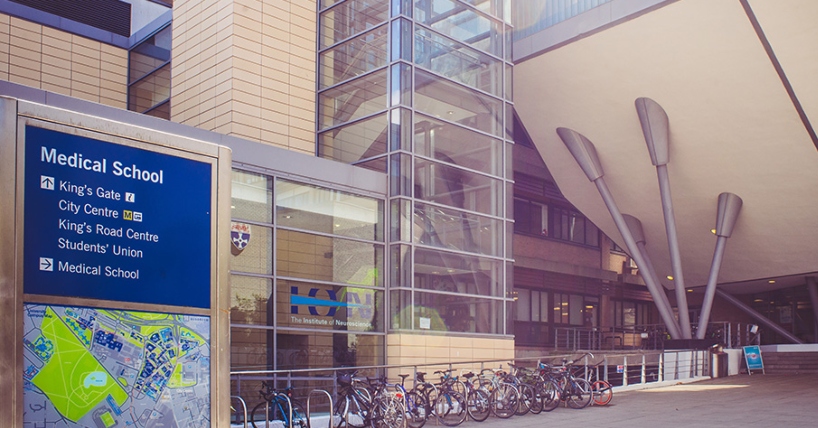
In Spring 2021, work commenced on the redevelopment of The Stephenson Building. Originally opened in the 1950s to teach the engineers needed to rebuild the country following the second World War, the new Stephenson Building will provide a world-leading environment for research and innovation, bringing together industry and academia like never before.
Off campus, Newcastle’s skyline has changed dramatically. The city’s tallest building has opened near Newcastle University Business School, standing at a whopping 272 feet high. And often considered as Newcastle’s ugliest building, the brutalist Commercial Union House on Pilgrim Street was demolished in mid-2022 to make way for new office space for HMRC.
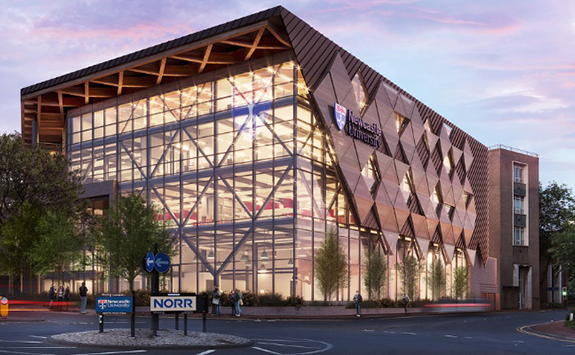
Next academic year, the University will celebrate big anniversaries in student media as The Courier turns 75, Newcastle Student Radio turns 25 and NUTV celebrates its 15th anniversary!
Also on the horizon is the development of a new Campus for Ageing and Vitality and the Farrell Centre. The ambitious £500m redevelopment of the former General Hospital in the West End of Newcastle for our new Campus will help people live longer and healthier lives through global leadership in ageing and research. And closer to campus, on the corner of Claremont Road, the new Farrell Centre will be a museum, civic space and research hub to engage the local community in architecture and urban planning.
